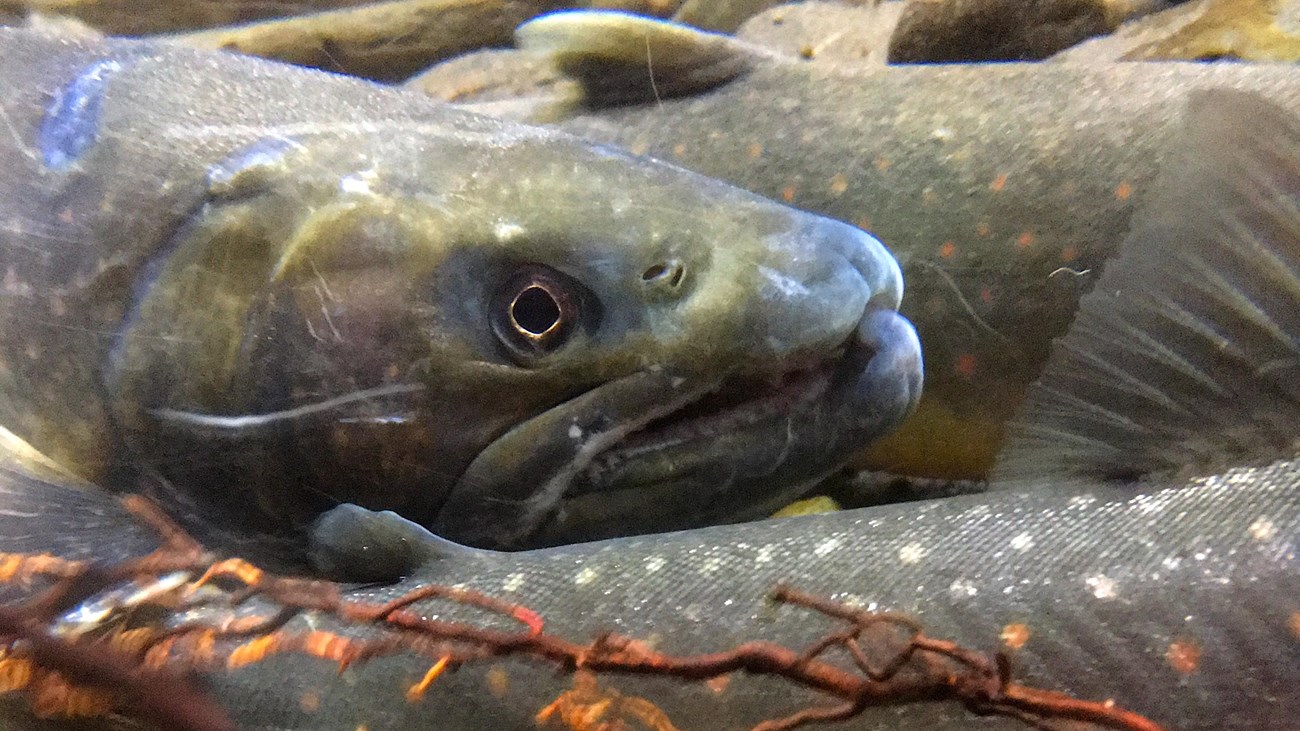Last updated: March 9, 2021
Thing to Do
Fishing at Mount Rainier National Park

NPS Photo
Mount Rainier National Park is dedicated to the conservation of native fish species and healthy aquatic ecosystems while providing recreational opportunities for the public’s enjoyment. Fishing regulations are put in place to protect and conserve the native fish populations. Anglers can play an important role in protecting native fish populations by following fishing regulations and reducing numbers of non-native fish.
Please see the Mount Rainier National Park Fish Regulations pamphlet for detailed fishing information (updated April 2020). Learn about fish species present in the park.
General Fishing Information
Fishing Season
Lakes are open year-round excluding lakes closed to fishing. Streams and rivers in the Nisqually, Cowlitz, Puyallup, and Ohanapecosh watersheds are open from the first Saturday in June until October 31. Streams and rivers in the White, Carbon, Mowich, West Fork, and Huckleberry watersheds are open from the first Saturday in June until Labor Day. The fishing season closes earlier in the year in watersheds with species listed under the Endangered Species Act (ESA) to protect them while they are spawning.
Closed Waters
The following streams and lakes are closed to fishing to protect water supplies: Klickitat Creek above Sunrise Road, Laughingwater Creek above the Ohanapecosh water supply intake, Edith Creek above the Paradise water supply, and Frozen Lake.
The following lakes are closed to protect sensitive riparian vegetation: Tipsoo Lake, Shadow Lake, and Reflection Lake.
Fryingpan Creek above the confluence with the White River is closed to fishing to protect threatened species listed under the Endangered Species Act (ESA).
Limits
All native fish species caught in streams must be released. Retention of non-native kokanee and brook trout is permitted with no limit. There are no daily or annual catch limits for fish caught in lakes, which are not native to lakes in the park.
License
A state fishing license is not required. A Washington State catch record card is required to fish for salmon and steelhead. A wilderness permit is required if you plan to camp overnight as part of your fishing trip.
Gear
Lead fishing tackle is prohibited because lead is highly poisonous to aquatic biota and humans with long lasting environmental consequences. Use single-point barbless hooks in streams. Single-point hooks cause less injury to fish that will be released. Multipoint hooks with barbs are allowed in lakes. Possession or use of live or dead bait fish, amphibians, non-preserved fish eggs, or roe is prohibited. Only artificial lures and flies may be used in streams. Bait is prohibited in streams, including any substance which attracts fish by scent or flavor.
- Lakes are open year-round excluding lakes closed to fishing
- Streams and rivers in the Nisqually, Cowlitz, Puyallup, and Ohanapecosh watersheds are open from the first Saturday in June until October 31st
- Streams and rivers in the White, Carbon, Mowich, West Fork, and Huckleberry watersheds are open from the first Saturday in June until Labor Day. The fishing season closes earlier in the year in watersheds with species listed under the Endangered Species Act (ESA) to protect them while they are spawning.
